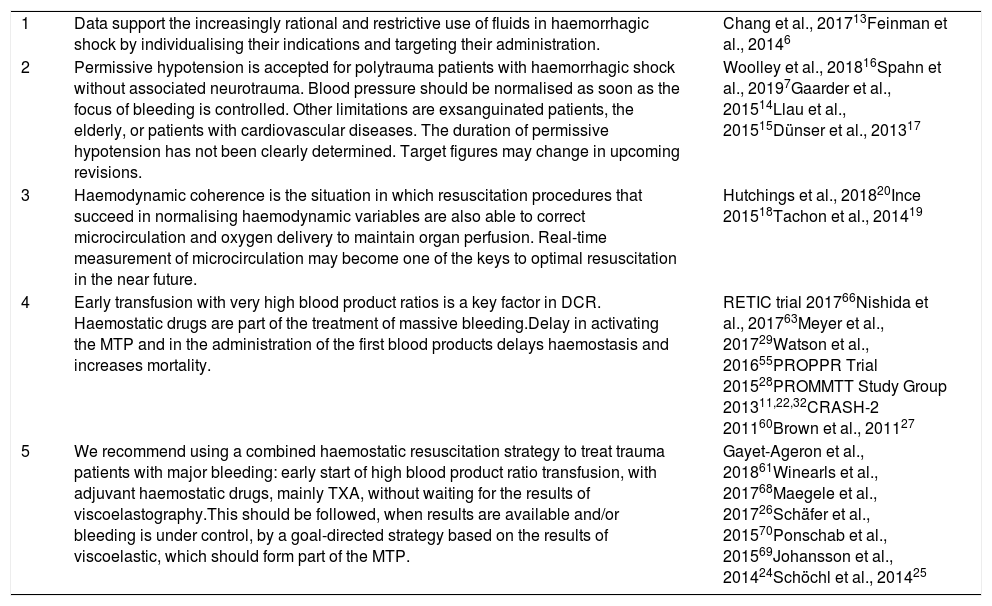Haemorrhagic shock is one of the main causes of mortality in severe polytrauma patients. To increase the survival rates, a combined strategy of treatment known as Damage Control has been developed.
The aims of this article are to analyse the actual concept of Damage Control Resuscitation and its three treatment levels, describe the best transfusion strategy, and approach the acute coagulopathy of the traumatic patient as an entity. The potential changes of this therapeutic strategy over the coming years are also described.
El shock hemorrágico es una de las principales causas de muerte en los pacientes politraumáticos graves. Para aumentar la supervivencia de estos pacientes se ha desarrollado una estrategia combinada de tratamiento conocida como Control de Daños.
Los objetivos de este artículo son analizar el concepto actual de la Reanimación de Control de Daños y sus tres niveles de tratamiento, describir la mejor estrategia transfusional y abordar la coagulopatía aguda del paciente traumático como entidad propia. Se describen también los potenciales cambios que podrían producirse en los próximos años en esta estrategia de tratamiento.











